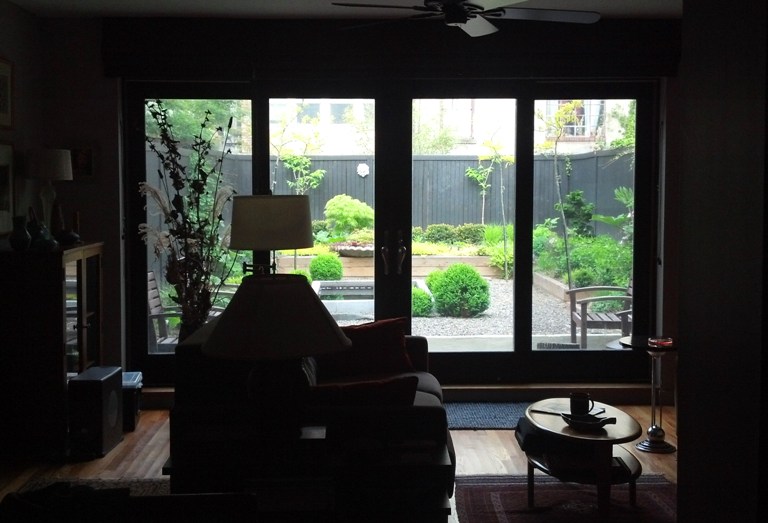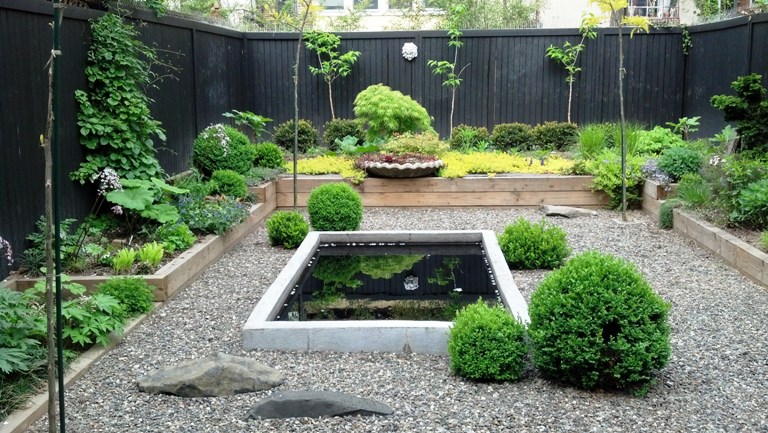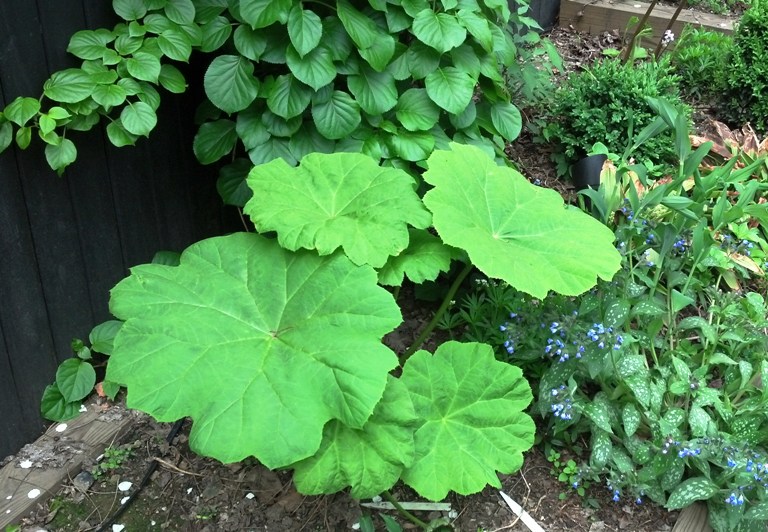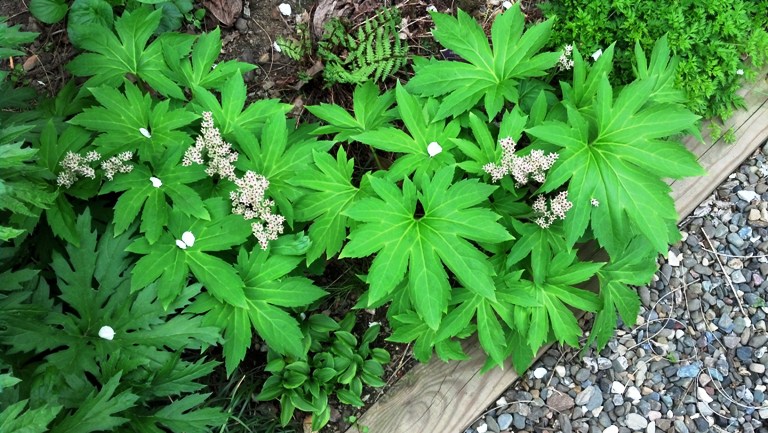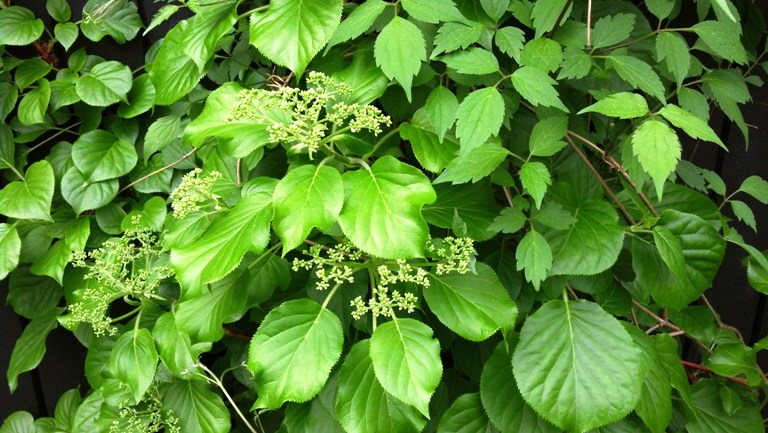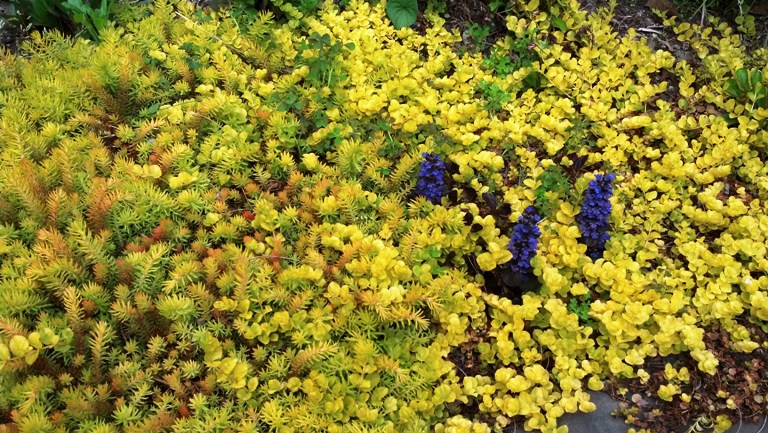Brooklyn, a viewing garden

This garden is more for viewing than sitting in. After a year with it, I've realized I see it much more from inside than outside. It's like looking into a lighted aquarium.
It's the fourth wall of the living room, where we spend most of our "city" time, and it's a constant source of entertainment and pleasure. Another room, but a room outside. Its exposure to neighboring houses may encourage this rather passive garden enjoyment. I speculate we'll spend much more time outside when the four-square framework of Sunburst honey locusts grows into a high, lacy canopy, lending a sense of open privacy we lack now.Too much prospect, too little refuge.
As I look at these photos, I'm amazed how different the space appears encased in the frame of this image. The garden looks crowded reduced to a six-inch-wide photo; in reality it doesn't seem crowded at all. Perhaps this has something to do with the foreshortening of the camera lens, the flattening of three-dimensional space?Looking toward the house wall with its simple geometric forms and straight lines, some sense of proportion and three-dimensionality is restored, even in a two-dimensional photo.
I don't mean to say I never go outside. I go out for a few minutes in the morning, usually just before running out of the house to go to work, and I do it again when I get home. Just a short visit to do whatever it is gardeners do in such "in between" moments. Lately I've been cutting last year's grasses and weeding.There are more and more things to see as spring advances ...... Astilboides tabularis ...
... Mukdenia rossii ...
... Hydrangea petiolaris climbing the wall and about to blossom ...
... Hydrangea quercifolia 'Snowflake', the amazing double-flowered form, which probably will grow much too large for this garden ...
... a form of low honeysuckle and a pretty clambering ground cover whose name I forget ...
... Sedum angelina, Lysimachia nummularia 'Aurea', and Ajuga 'Dark Scallop' blooming ...
The bare soil needs a low-level ground cover. It will become invisible when the plants grow to size, but a low carpet of Mazus reptans, ajugas, and other diminuitive spreaders will be a good thing, both for visual appeal and to keep down weeds.
